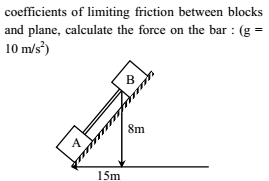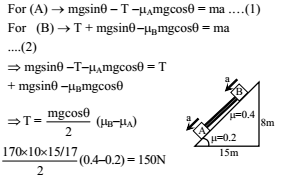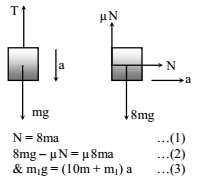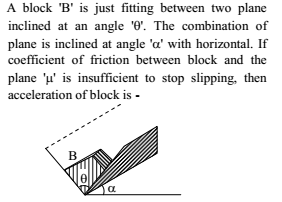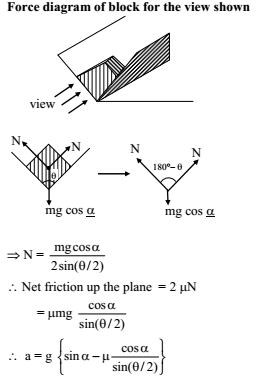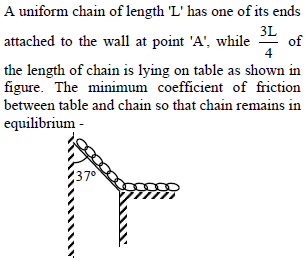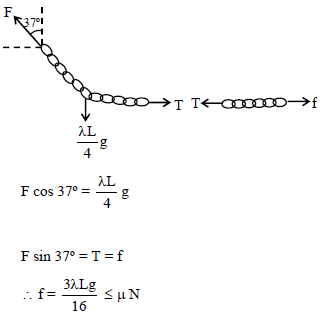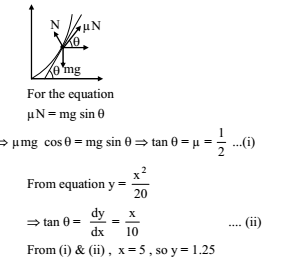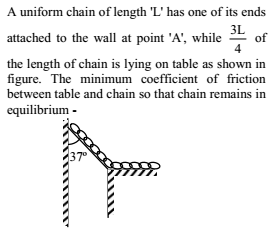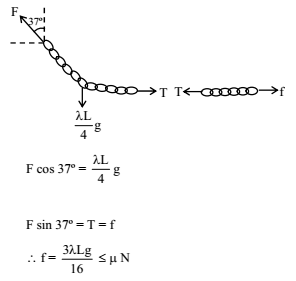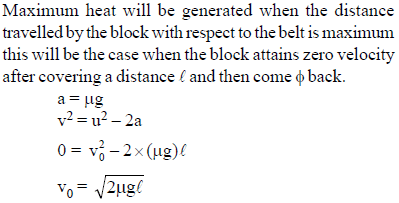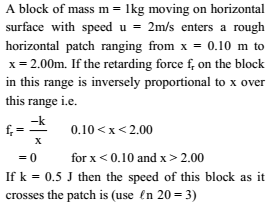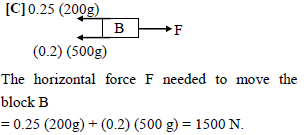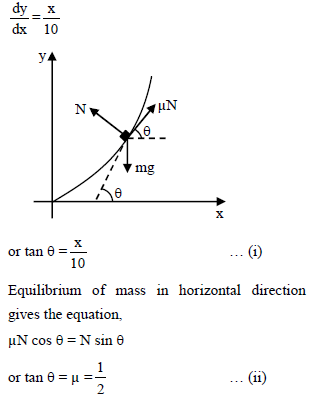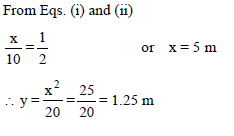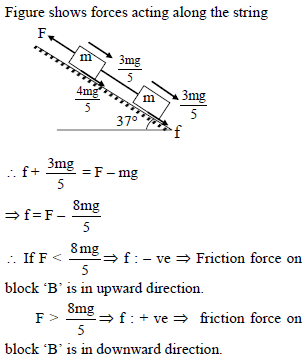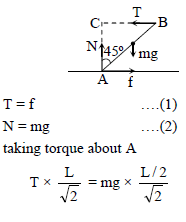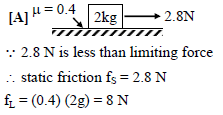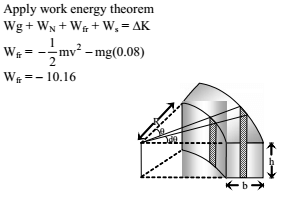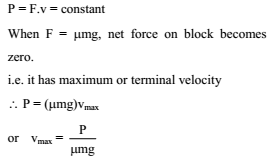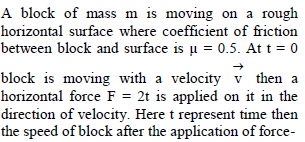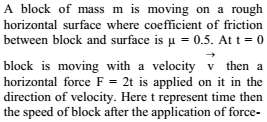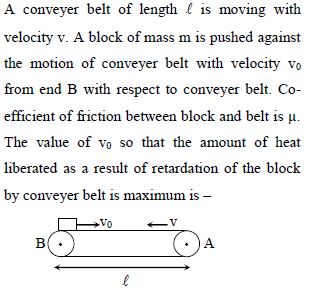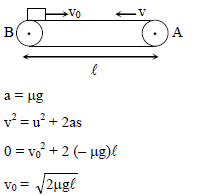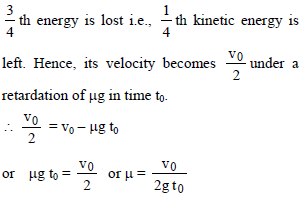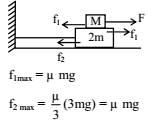Chapter Test: Friction - 2 - JEE MCQ
30 Questions MCQ Test - Chapter Test: Friction - 2
In the arrangement shown in the figure mass of the block B and A are 2m and 8m respectively. Surface between B and floor is smooth. The block B is connected to block C by means of a pulley. If a whole system is released then the minimum value of mass of the block C so that the block A remains stationary with respect to B is (Co-efficient of friction between A and B is µ)-
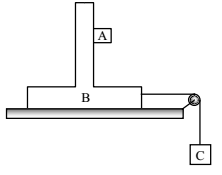

A parabolic bowl with its bottom at origin has the shape y = x2/20. Here x and y are in metres, the maximum height at which a small mass m can be placed on the bowl without slipping (coefficient of static friction is 0.5) is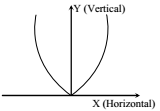
A conveyer belt of length l is moving with velocity v. A block of mass m is pushed against the motion of conveyer belt with velocity v0 form end B. Co-efficient of friction between block and belt is μ. The value of v0 so that the amount of heat liberated as a result of retardation of the block by conveyer belt is maximum is

A body of mass m is hauled up the hill with constant speed v by a force such that the force at each point is directed along the tangent to the path. The length of base of hill is L and its height is h. The coefficient of friction between the body and path is μ. Then which of the following statement is incorrect when body moves from bottom to top -
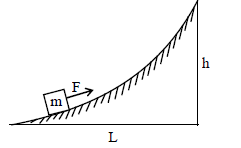
A block A of mass 200 kg rests on a block B of mass 300 kg. A is tied with a horizontal string to a wall. Coefficient of friction between A and B is 0.25 and that between B and floor is 0.2. The horizontal force F needed to move the
block B is (g = 10 ms–2)
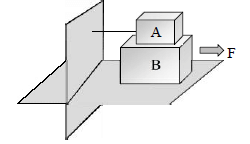
A parabolic bowl with its bottom at origin has the shape y = x2/20. Here x and y are in metres. The maximum height at which a small mass m can be placed on the bowl without slipping (coefficient of static friction is 0.5) is :
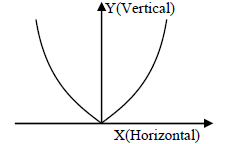
Two identical blocks are kept on rough inclined plane (μ = 0.5). The blocks are connected with light string. If mg < F < 2mg, then -
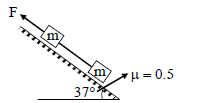
A rod AB of mass 10 kg tied with a string at C such that AC = BC and rod remains in equilibrium then friction force by horizontal surface will be –
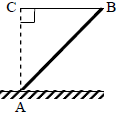
A block of mass 2 kg is placed on the floor. The coefficient of static friction is 0.4. If a force of 2.8 N is applied on the block parallel to the floor, the force of friction between the block and the floor (taking g = 10 ms–2) is -
A ring of mass 200 gram is attached to one end of a light spring of force constant 100 N/m and natural length 10 cm. The ring is constrained to move on a rough wire in the shape of quarter ellipse of major axis 24 cm and minor axis 16 cm with its centre at origin. The plane of ellipse is vertical and wire is fixed at points A and B as shown in figure. Initially ring is at A with other end of spring fixed at origin. Ring is given a horizontal velocity of 10 m/s towards right so that it just reaches point B, then select the correct alternative (s)
(g = 10 m/s2)
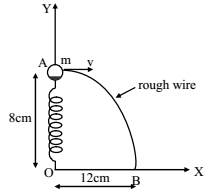
A block of mass m is pulled by a constant power P placed on a rough horizontal plane. The friction co-efficient between the block and the surface is μ.Maximum velocity of the block will be –
A body of mass 40 kg resting on a rough horizontal surface is subjected to a force P which is just enough to start the motion of body.
If µs = 0.5, µk = 0.4, g = 10 m/s2 and the force P is continuously applied on the body, then the acceleration of the body is -
A block A of mass 2 kg rests on another block B of mass 8 kg which rests on a horizontal floor. The coefficient of friction between A and B is 0.2 while between B and floor is 0.5. When a horizontal force 25 N is applied on B, the0 frictional force acting between A and B is -
A particle moves on a rough horizontal ground with some initial velocity say v0. If 3/4th of its kinetic energy is lost in friction in time t0. Then coefficient of friction between the particle and the ground is -
A suitcase is gently dropped on a conveyor belt moving at 3 m/s. If the coefficient of friction between the belt and the suitcase is 0.5, find the displacement of the suitcase relative to conveyor belt before the slipping between the two is stopped : (g = 10 m/s2)
A box weighing 20 kg is being pulled along a wooden floor with a force of 500 N. If µk = 0.5, the acceleration of the block is [g = 10 m/s2]
Two blocks of masses m and 2 m placed one over the other as shown in figure. The coefficient of friction between m and 2m is µ and between 2m and ground is µ/3. If a horizontal force F is applied on upper block and T is tension developed in string then choose the incorrect alternative.

Which one of the following species of earthworm is not recommended for vermicomposting?
After the body starts moving, the friction involved with motion is
A block of mass 1 kg lies on a horizontal surface in a truck. The coefficient of static friction between the block and the surface is 0.6. If the acceleration of the truck is 5 ms-2, the frictional force acting on the block is
A particle moves in a circle with a constant speed of 6m /s. Its centripetal acceleration is 120 m/s2, The radius of the circle is



